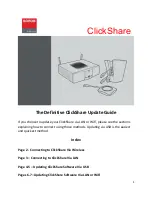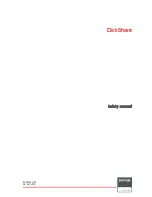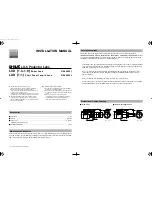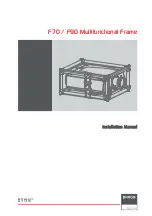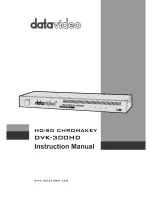
The information contained here are property of DIGITAX Automotive Electronics Italy, and extremely confidential. Any disclosure, copying, distribution to third party
is strictly prohibited.
35
131
Priority of Prog-Date 3 -
This is the number that corresponds with the priority that Prog-Date n. 3 has with respect to the other Prog-Dates. The allowed number goes
from: 8 (min. priority) to: 1 (max. priority). If two or more Prog-Dates have the same number then those Prog-Dates have the same priority.
No / Yes
132
Priority of Prog-Date 4 -
This is the number that corresponds with the priority that Prog-Date n. 4 has with respect to the other Prog-Dates. The allowed number goes
from: 8 (min. priority) to: 1 (max. priority). If two or more Prog-Dates have the same number then those Prog-Dates have the same priority.
No / Yes
133
Priority of Prog-Date 5
: NOT USED for F2 Plus
No / Yes
134
Priority of Prog-Date 6
: NOT USED for F2 Plus
No / Yes
135
Priority of Prog-Date 7 : NOT USED for F2 Plus
No / Yes
136
Priority of Prog-Date 8 : NOT USED for F2 Plus
No / Yes
NIGHT/DAY LEDS BITMAP
137
Bitmap for night / day leds
- This is the number that determines in which Prog-Date(s) the night/day leds should go ON and in which they should go OFF. During night-
time the night-led goes ON and the day-led goes OFF. During day-time the day-led goes ON and the night-led goes OFF. Night-time and day-time are programmed in
Q.38 and Q.39. The allowed number goes from 0 (min) to 255 (max). Each Prog-Date has a number associated with it that needs to be added to the sum:
0
==>
leds OFF in all Prog-Dates,
+ 1
==>
leds ON in Prog-Date 1 (night-time),
+ 2
==>
leds ON in Prog-Date 2 (holiday-time),
+ 4
==>
leds ON in Prog-Date 3,
+ 8
==>
leds ON in Prog-Date 4,
For example, suppose the night/day leds should go ON: in night-time (Prog-Date 1), in holiday-time (Prog-Date 2), in ProgDate 3, and in any other Prog-Date they should
be OFF. Then (starting with: leds OFF) the following numbers should be added: 0 + 1 + 2 + 4 = 7. So, in this case the number to be programmed is 7.
138
Number of Start-block (OP delayed):
this is the number of the tariff-block to be used at the start of a fare when key OP is pressed for about 2 seconds going from
FOR-
HIRE
to
HIRED
. See also Q.15. The allowed value goes from 0 (min) to 62 (max).
0 - 62
COUNTER N. 1
139
Load-value event-counter n. 1 -
This is either the number of units, or the distance, or the time in seconds, or the cost of the fare, or the cost of the extra charges that
should be counted for the tariff-block to be changed. The allowed value goes from 0 (min) to 65535 (max). The tariff-block to change to is to be programmed in Q.140.
0 - 65535
140
Block-number at event n. 1 -
This is the block number (absolute) to be used when the event occurred that has been programmed in Q.139. The allowed value goes
from 0 (min) to 62 (max). Also allowed is the value 255; In this case, instead of using a new block number, the former block number is used again.
0 - 62
141
Block-offset at event n. 1
- This is the block offset (relative) to be used when the event occurred that has been programmed in Q.139. The relative block offset is the
number of blocks to add to the current block number in order to obtain the new block number. The allowed value goes from 0 (min) to 62 (max).
0 - 62
142
Load-value 1 is units?
- Is the parameter programmed in Q.139 for event counter 1 the number of units?
No / Yes
143
Load-value 1 is distance? -
Is the parameter programmed in Q.139 for event counter 1 the distance in meters or yards (see Q272)?
No / Yes
144
Load-value 1 is waiting-time? -
Is the parameter programmed in Q.139 for event counter 1 the waiting-time in seconds?
No / Yes
145
Load-value 1 is cost of fare?
- Is the parameter programmed in Q.139 for event counter 1 the cost of the fare?
No / Yes
146
Load-value 1 is cost of extra-charge?
- Is the parameter programmed in Q.139 for event counter 1 the cost of the extra-charge?
No / Yes
147
Reload event counter 1
- Event Counter 1 must be reloaded every meter? If not then it will be reloaded every second.
The allowed answer is either:
0 (No: every second) or: 1 (Yes: every meter or yard).
No / Yes
148
Activation event counter 1 -
Event Counter 1 should be activated only above the cross-speed? If not then it will always be activated.
The allowed answer is either:
0 (No: always) or: 1 (Yes: only above).
No / Yes
149
Event counter 1 is suspended?
- Event Counter 1 should be momentarily suspended? If not then it will be active.
The allowed answer is either:
0 (No: active) or: 1 (Yes: suspended).
No / Yes
COUNTER N. 2
150
Load-value Event-Counter n. 2:
this is either the number of units, or the distance, or the time in seconds, or the cost of the fare, or the cost of the extra charges that
should be counted for the tariff-block to be changed. The allowed value goes from 0 (min) to 65535 (max). The tariff-block to change to is to be programmed in Q.151.
0 - 65535
151
Block-Number (abs) at event n. 2:
this is the block number (absolute) to be used when the event occurred that has been programmed in Q.150. The allowed value
goes from 0 (min) to 62 (max). Also allowed is the value 255; In this case, instead of using a new block number, the former block number is used again.
0 - 62
152
Block-Offset (rel) at event n. 2:
this is the block offset (relative) to be used when the event occurred that has been programmed in Q.150. The relative block offset is
the number of blocks to add to the current block number in order to obtain the new block number. The allowed value goes from 0 (min) to 62 (max).
0 - 62
153
Load-value is Units? -
Is the parameter programmed in Q.150 for event counter 2 the number of units.
No / Yes
154
Load-value is Distance? -
Is the parameter programmed in Q.150 for event counter 2 the distance in meters or yards (see Q272)?
No / Yes
155
Load-value is Waiting-Time (in seconds)?
- Is the parameter programmed in Q.150 for event counter 2 the waiting-time in seconds?
No / Yes
156
Load-value is Cost of Fare?
- Is the parameter programmed in Q.150 for event counter 2 the cost of the fare?
No / Yes





























